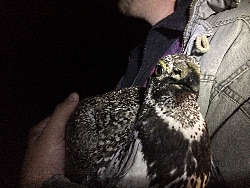
Courtesy & Copyright Nicki Frey, Photographer
Cold, deep snow is all they can see on the valley floor.
The group is looking for the greater sage-grouse whose GPS transmitters are sending Frey signals – indicating they are nearby.
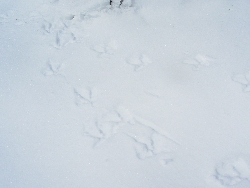
Courtesy & Copyright Nicki Frey, Photographer
Frey explains, “Southern Utah is the farthest southern location where greater sage-grouse live in the U.S. This valley is part of their winter habitat.”
In disbelief, one biologist responds, “It would be impossible for grouse to winter here.”
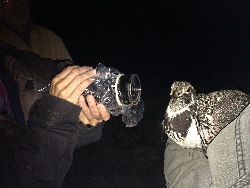
Courtesy & Copyright Nicki Frey, Photographer
Just as Frey begins to respond – 20 grouse burst out of the snow in front of them and fly away. “It scared us out of our skin.” Frey said.
“Everyone retreat! Everyone off of the snow!” Frey calls out.
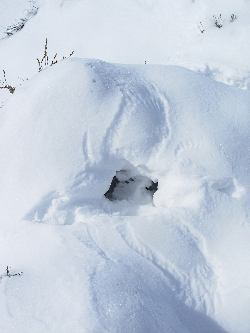
Courtesy & Copyright Nicki Frey, Photographer
Going against the grain, the grouse have been living under the deep snow.
Sagebrush in this area only grow 1.5 to 3 feet, and since the snow can get up to 12 feet it’s not far into winter before the sagebrush is completely covered.
Surprisingly, the grouse have been able to adapt.
Frey explains, “They make these little snow caves and eat the sagebrush leaves inside the cave until they’re gone, then they pop out and pop back into the next sage brush cave and eat the leaves in there.”
Buried sagebrush isn’t the only obstacle the southern grouse have had to adapt to.
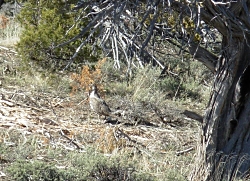
Courtesy & Copyright Nicki Frey, Photographer
This environment pushes the grouse to fly longer and further than they normally would.
They fly back and forth between the fragmented sagebrush habitats to find what they need to have a healthy population.
Having to constantly travel between these habitats takes a toll on the southern grouse.
This is an area Utah wildlife managers have helped the greater sage-grouse by removing pinyon-juniper forests which fragment their habitat.
According to Frey, “Anytime we [reconnect] habitat [in the southern region] the grouse use it immediately because they want to expand.”
The impact the Bureau of Land Management and Utah Division of Wildlife Resources projects have had on decreasing the forest barriers is astounding. “The numbers of sage-grouse have steadily increased every year.”
Frey’s research highlights this bird’s remarkable ability to adapt to southern Utah’s climate.
By using the research to assist with management planning, Utah can continue removing barriers for grouse survival and ensure their continued presence in our wildlands.
This is Shauna Leavitt for Wild About Utah.
Credits:
Principal Investigator: Nicki Frey
Photos: Courtesy and Copyright Nicki Frey
Text: Shauna Leavitt
Sources & Additional Reading
